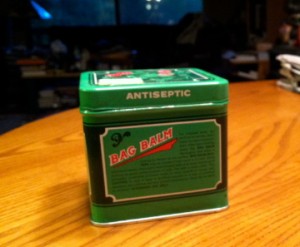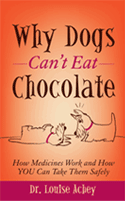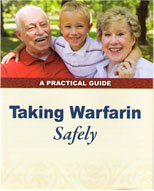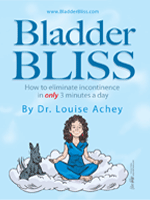What’s in Bag Balm, Anyway?
Tags: 8-hydroxyquinoline, antiseptic, Bag Balm®, Dairy Association Company, FDA, John Norris, mercurochrome, mercury, merthiolate, ointment, topical
One of my friends swears that Bag Balm® is great for cuts, abrasions and dry skin on humans, not just in animals. Does it actually contain an antibiotic?
Five years ago, my parents were forced to downsize, and I was assigned the job of cleaning out their medicine cabinet. Picking up a faded green square can of Bag Balm, these words caught my eye: “ACTIVE INGREDIENTS: 0.005% MERCURY FROM ETHYLATED MERCURY STEROLS, PETROLATUM, AND LANOLIN.”
Mercury? REALLY? I checked my own can as soon as I got back home, and on the side of my can was: “ACTIVE INGREDIENTS: 8-HYDROXYQUINOLINE SULFATE 0.3% in a PETROLATUM, LANOLIN BASE.”
Could Bag Balm have had mercury in it? Yes, at one time it did. When John L. Norris purchased the formula in 1899 that became the recipe for Bag Balm, topical mercury compounds were commonly used as anti-infectives. If you, like me, remember your mother putting red Mercurochrome® on your cuts, or its colorless cousin Merthiolate®, she was applying a mercury-based antiseptic to your “owie”.
Mercury compounds do not work very well as anti-infectives, but can be absorbed into your body and eventually cause toxicity, especially if applied to broken skin and used over a long period of time. In 1992 the Food and Drug Administration (FDA) issued a statement that declared that topical mercury compounds for topical use were neither safe nor effective as anti-infectives, and in 1998 the use of mercury compounds in topical products was banned outright by the FDA, removing the original formulas of Merthiolate® and Mercurochrome® from the shelves of pharmacies and grocery stores.
When did Bag Balm® change its formula from ethylated mercury to its current anti-infective, 8-hydroxyquinoline? I looked up the formula for Bag Balm® in the database Poisindex®, the same one used by poison centers throughout the United States, but the only formulation I found was the one with 8-hydroxyquinoline. To make sure, I called my local poison center, the Washington State Poison Center in north Seattle, who confirmed that as the only formulation listed for Bag Balm®.
So I went to the source. I called the Dairy Association Company, Inc, manufacturers of Bag Balm® in Lyndonville, Vermont, and asked them straight out, “When did you swap out the mercury for the 8-hydroxyquinoline? Did the FDA make you do it when they outlawed its use in 1998?”
According to Charles Allen, Vice President of the Dairy Association Company, the mercury was taken out of Bag Balm long before that – in 1972, to be exact. But what he said next really surprised me. “Dr. Achey, the anti-infective 8-hydroxyquinoline has been in our formulation all along. We just changed the labeling on the can.” Now, isn’t THAT interesting…
Bag Balm® was originally sold to dairy farmers to treat cow udders, keeping them from getting chapped and helping heal minor cuts and scrapes. Most of us recognize Bag Balm’s distinctive green square metal can in both the 10-ounce and 1-ounce sizes. The Dairy Association Company, Inc. continues to be family owned and manufactures and ships the ointment from their facility in Lyndonville, Vermont all over the world. Although it clearly states on the can Veterinary Use Only, many folks use it on their own cuts and chapped body parts with good results.
I used Bag Balm® on myself last year for a jagged cut on my ring finger. Despite soaking the gash in Epsom salts and non-prescription antibiotic ointments, it continued to swell, gradually getting more and more painful, and turning red. I called and made an appointment at my doctor for the following afternoon, but that night I decided to change my strategy. After all, what could I lose?
As a last resort, after soaking my very sore finger in Epsom salts one more time, I applied a liberal coating of Bag Balm® over it instead of the antibiotic ointment I had been using, then covered it with a bandage and went to bed. I wasn’t expecting much improvement, but when I got up the next morning I was totally astounded to find the cut nearly normal in color with no pain and barely any swelling left. It was all but completely healed. Whatever is in that stuff, it worked. So, I checked out 8-hydroxyquinoline.
What is 8-hydroxyquinoline, anyway? It ‘s not quite an antibiotic, but something that may work even better. 8-hydroxyquinoline has had an excellent reputation as a topical anti-infective for many years and is listed as the active ingredient in liquid bandages such as New Skin®. The 19th edition of the United States Dispensatory published in 1907 described it as a “very powerful and well-regarded antiseptic”.
8-hydroxyquinoline works to stop the growth of bacteria and fungi by binding to certain trace minerals on the surface of the those organisms, creating a toxic compound that poisons it. Other compounds closely related to 8-hydroxyquinoline are currently being studied as weapons against “super-bug” bacteria that have developed resistance to multiple antibiotics.
Dr. Louise’s new book, Why Dogs Can’t Eat Chocolate: How Medicines Work and How YOU Can Take Them Safely is now available here.




